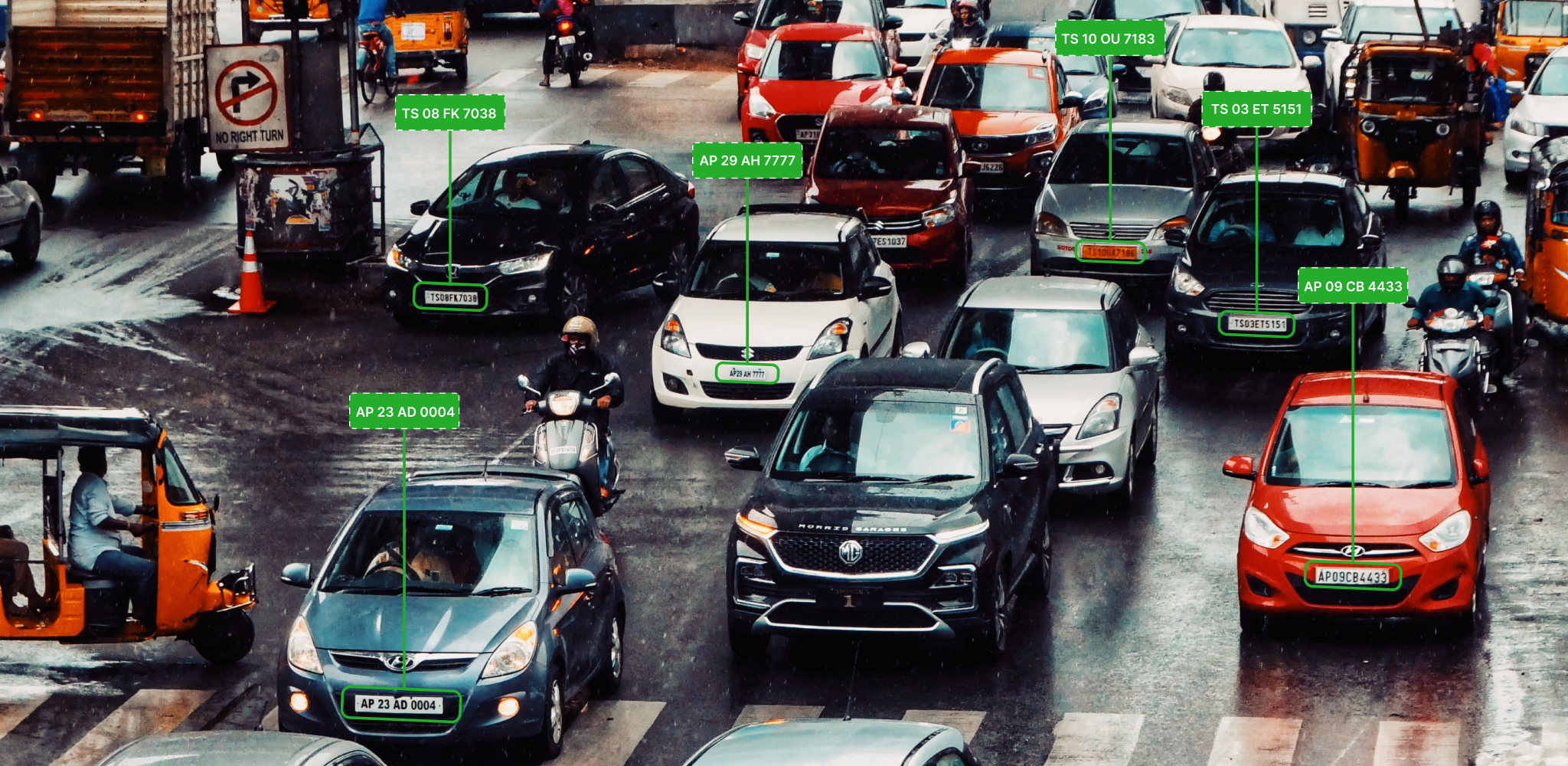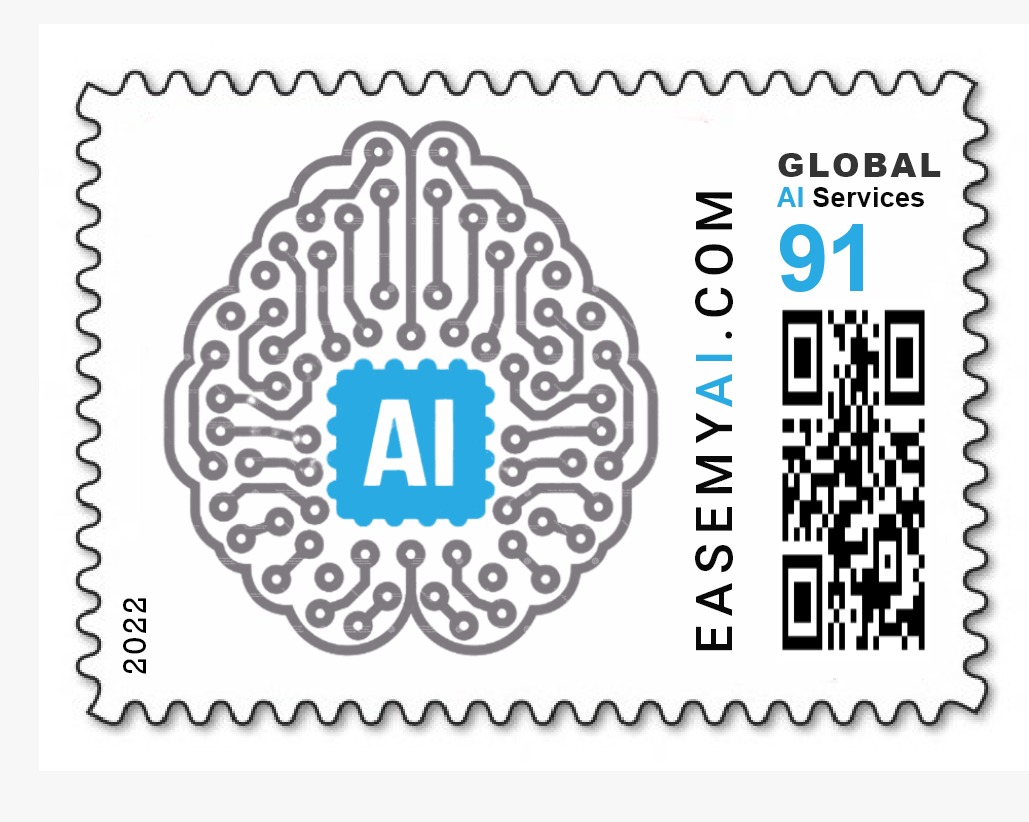Accelerating
Digital Transformation
One Solution At A Time!
Our AI-powered solutions have served clients from a wide range of industries. With seamless integration between our AI ecosystem and enterprise hardware, rapid product development capabilities and unified vendor management, our solutions bring the potential of digital process automation to your fingertips!
We have successfully deployed various solutions, including:
Enhancing Safety Compliance at Tower Construction Sites with RedX AI Automation
The Challenge:
Tower construction is inherently risky, with workers required to perform tasks at considerable heights. Traditional safety monitoring methods were largely manual, relying on supervisors to visually confirm compliance with safety gear requirements. This approach was not only inefficient but also prone to errors, leading to potential safety risks.
Our Solution:
Our solution was to implement the RedX AI automation platform, uniquely adapted to meet the safety needs of the tower company. Unlike the traditional setup, RedX utilizes advanced human tracing cameras, all stationed on the ground, to monitor and ensure safety compliance across the construction site. The implementation encompassed four crucial AI-driven use cases, all utilizing ground- based human tracing cameras:
1. Harness Detection: These cameras track workers as they prepare to climb the tower, ensuring they are wearing safety harnesses.
2. Safety Jacket Detection: Before ascending, the system verifies that each worker is equipped with the required safety jackets.
3. Helmet Detection: The cameras also confirm that workers are wearing safety helmets prior to climbing.
4. Shoes Detection: Lastly, the system checks for appropriate safety footwear among all personnel on the ground.

Gunshot And Suspicious Sound Detection System
The Challenge:
Protecting property and ensuring safety within premises poses significant challenges, especially in environments prone to various threats and disturbances. Traditional security systems may struggle to effectively detect critical sounds, leaving properties vulnerable to potential dangers.
The inability to promptly identify and respond to events such as gunshots, car horns, glass breaking, human yelling, and other crucial auditory cues can result in delayed interventions, increased risks, and compromised safety measures. As a result, property owners face heightened concerns regarding asset protection, liability management, and overall security effectiveness.
Our Solution:
Traditional security? Reactive. Our AI system with Edge Computing cameras proactively detects gunshots & suspicious sounds (yells, horns, breaking glass) in real-time. Get instant alerts, evidence capture (recordings & pictures), and a rapid 30-second response – all through our user-friendly Ease My AI platform. Upgrade your security from reactive to proactive. Protect your people, property, and peace of mind.
Enhanced Features:
- On-premise AI processing for real-time analysis and privacy.
- Automatic incident ticketing streamlines response.
- Configurable alerts for critical times with live footage for law enforcement.

ALPR (Automatic License Plate Recognition), Road Safety And Perimeter Security Systems
The Challenge:
SAIL is a public sector undertaking owned by the Ministry of Steel, India. The client wanted to enhance the security, safety and operational efficiency at the Rourkela Steel Plant by implementing video analytics solutions within its premises. One demand was to implement an automated vehicle license plate recognition system using the existing CCTV network at the plant to capture and analyze number plates in real-time.
The client also needed a video analytics system that could integrate with the CCTV system to recognize traffic light violations at key intersection within the plant premises. To ensure a high standard of security, the client also wanted an AI-automated system to detect unauthorized intrusions at the plant perimeter, and a gas leak detection system as well.
Our Solution:
By leveraging computer vision, video analytics and advanced AI algorithms, we provided the client with a data-driven, real-time monitoring system to extract valuable insights from CCTV cameras, video footage, and sensors.

Warehouse Management System
The Challenge:
Traditional tyre loading methods often result in missed tires, leading to revenue loss, delivery delays, and increased workload for warehouses and distribution centers managing high tire volumes. Exacerbating the issue, manual counting processes can be prone to errors and inefficiencies, further impacting operational productivity and customer satisfaction.
Our Solution:
Implementing automated tire counting through a computer vision system ensures precise and efficient container loading. By automating the tire counting process, this solution guarantees accuracy and efficiency, eliminating missed tires and enhancing loading speed.
Additionally, it reduces workload and improves delivery reliability, ultimately streamlining operations and optimizing productivity.

Railway Track Defect Monitoring
The Challenge:
It is critical to identify any defects in railway lines, especially those used by ports and large warehouses on a daily basis. Hence, the client wanted an automated system that could not only help in identifying such defects on railway tracks, but also pinpoint the location for quick repairs.
Our Solution:
In order to continuously monitor the railway track, we created and installed a special hardware device on the brake van (the last coach of a train). During operations, the dedicated camera with integrated computer vision scans the railway track’s clips. After real-time image processing, if any clip is found to be missing from the track, the built-in GPS module is activated to extract the precise geo-location of the missing clip.

Visual Positioning System
The Challenge:
The client wanted an AI-powered system to accurately identify the position of individual items within a warehouse that could reduce the time taken to locate items, and consequently streamline their inventory management strategies.Our Solution:
To calculate the exact geolocation (latitude & longitude) of items, we designed a platform that could map the location of objects on Google Maps, providing a simple and familiar user interface.
For the hardware setup, we deployed PTZ (pan, tilt and zoom) cameras as well as fixed cameras that could track the forklifts’ movement and monitor the position of each rack within the warehouse.
The PTZ cameras would continuously scan the forklifts’ movement in their respective visual zone. Once a camera detected a loaded forklift near the stacking area for at least 30 seconds, our computer vision solution would calculate the exact position of the forklift (latitude and longitude) using the camera’s location.
Once the forklift operation is completed, the PTZ camera can zoom into the rack and find the QR Code associated with that rack. Once the QR Code is detected, the camera can read the QR Code and store precise information about the rack and its position directly into the warehouse database.
Similarly, other cameras will scan QR Codes of other racks to store item-position information on the database. When a user wants to find a particular item, they can simply use the solution to enter the item details into the search bar. The system searches the database and fetches complete information about the particular item, including its exact position on the rack and geo-location with a spatial resolution of 5 centimeters.

GDPR Compliance Person Detection System
The Challenge:
The security teams at airports are always on the lookout for suspicious individuals or behaviour to identify possible illegal activities. However, using traditional cameras is not possible due to GDPR restrictions, which ensure that the privacy of individuals is maintained and no personal information is captured during occupancy detection.
Our Solution:
Our Solution: We deployed an array of IoT thermal cameras in areas of the airport where traditional cameras were prohibited. The image data from the IoT thermal camera array is then processed by our computer vision solution in real-time to detect the presence and number of people in the area.
To comply with GDPR regulations, our solution preserves the privacy of individuals by not capturing any personal identifiers. The client used it to detect suspicious behaviour, such as a person was loitering in certain areas for more than the specified time.
This occupancy detection system helped reduce instances of gold smuggling at Sri Lankan airports, while respecting the privacy of individuals being recorded.

Automated Textile Defect Check
The Challenge:
Quality Control (QC) is paramount in any production-based industry. The client wanted an automated computer vision solution to detect and categorize textile defects in real-time to streamline their QC process.
Our Solution:
To automate the quality control process, we set up hardware including high-speed USB cameras and a PLC-based label applicator, and connected them to our AI platform. Next, we deployed AI models on the platform that could visually identify 45 different types of textile defects.
As the textile product progressed on the production line, the USB cameras scanned it, and if a defect is found, the platform triggered the PLC label applicator device to apply a relevant label to the defective cloth. Moreover, the status of the defect identification process is displayed on the dashboard. This helped the client automate the entire end-to-end Quality Control (QC) process for their textile product.

Truck Tilt Detection
The Challenge:
Port and logistics businesses often face issues while loading/unloading containers from trucks. One common issue is that, on occasion, the RTG crane operator tries to lift the container off the truck before the locks of the container are opened.
Due to the non-opening of the container locks, the truck gets tilted and accidents may potentially happen, causing damage to the truck. In the other scenario, when RTG crane operators are loading containers on trucks, aligning the container with the truck bed takes time, and any misalignment can damage the truck or the container.
Hence, the client wanted a solution to detect if the truck is being lifted from the ground during unloading using computer vision and alert the crane operator to stop the operation immediately. Similarly, the client wanted a solution to help automate the alignment of the container and truck bed during loading of containers.
Our Solution:
Unloading Operation Solution: We deployed LIDAR (Light Detection and Ranging) sensors on the sides of the RTG crane to align with the truck’s position. Using computer vision integrated cameras, the solution can accurately measure the tilt of the truck in case the crane lifts the container before the mechanical lock between the truck chassis and container is opened. Moreover, as soon as the truck tilts beyond a threshold, our solution alerts the crane operator and simultaneously activates a hooter in the crane operator’s cabin. To automate the stopping of the operation, the solution even provides a “STOP” signal to the PLC of the crane.
Loading Operation Solution: We developed a solution by setting up a specialized camera on the crane that aligned exactly with the top of the truck. The computer vision solution then calculates a virtual region, within which the truck must be aligned. The virtual region is visible to truck driver on a screen inside his cabin. Unless the truck driver aligns the truck bed to the virtual region, a red outline will be displayed on the screen along with an instruction to align the truck. During this time, crane operator is also instructed to stop (or slow down) to movement of the container towards the truck.
Once the truck is aligned within the virtual region, the virtual box has a green outline and the crane operator gets an alert on his screen to resume the movement of the container towards the truck. If the operator still continues to move the container towards the truck before it is aligned, our solution sends a command to the crane’s PLC system and stops the operation, while alerting the operator with a hooter.

